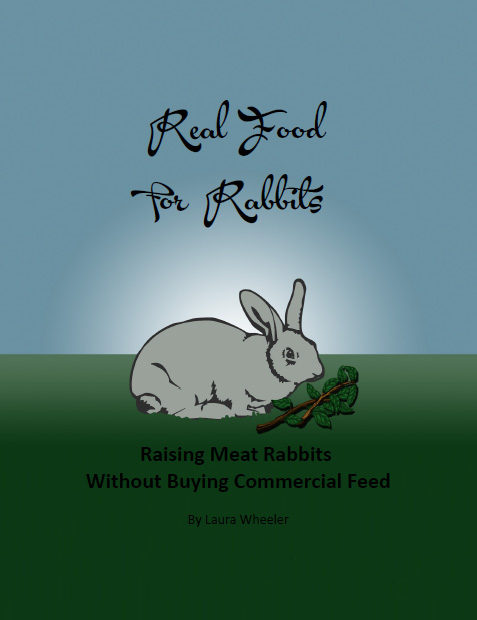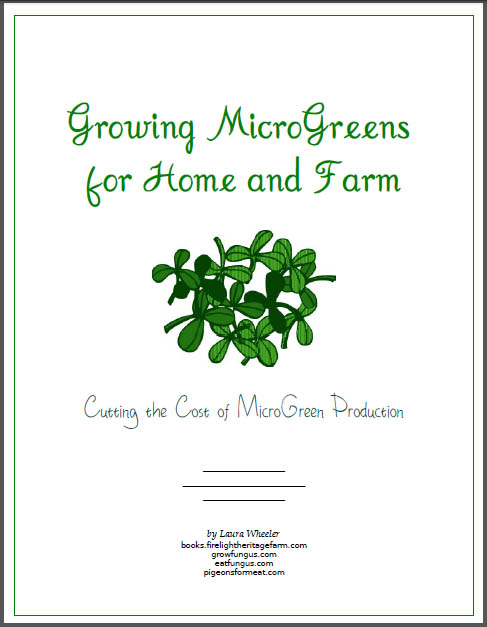 Click to Download Your Free Heritage Pickling and Culturing e-Book Now!
Click to Download Your Free Heritage Pickling and Culturing e-Book Now!
Instant Download, NO Registration Required!
Milk Goats in Small Spaces
There is no doubt that goats like plenty of space to forage and browse. There is also no doubt that you can fit goats into smaller spaces than you can a cow. Sometimes MUCH smaller spaces. But there are trade-offs, and compromises, and lots of considerations when determining how to fit your goats into a space that is a little smaller than what you would prefer.
Ideally, I'd love to see goats having the space to range on about a quarter acre or more of good land each, with lots of varied forage, and some obstacles for them to climb on somewhere in the middle. Ideally. Most people I know do not have the option of the ideal. And I have never had the option of the ideal either.
But let's start there, so you understand the kind of compromises you have to make when scaling down.
First off, to put even four goats on an acre, it needs to be a GOOD acre. It needs to grow forage fairly quickly, and it needs to have a good mix of grasses, clovers, brushy weeds, wildflowers, dandelions, tumbleweeds or whatever it is that grows like crazy in your area. If it has some fruit trees or other trees in there, so much the better (you may need to wrap the trunks in hardware cloth to keep the goats from chewing the bark) - trees provide a lot of additional forage from the branches, leaves in the fall (goats will eat a lot of the fallen leaves), and windfall fruits are helpful also, plus the animals really appreciate the extra shade in the summer.
If you have that good acre of land, and optimize it, then buying feed can be largely avoided (except for winter). It is important that we start with that, because THAT is the big compromise that you have to make with smaller land amounts. With the right land and good forage, even milk goats will not need supplemental grain feed - indeed, a few scraps from the garden or kitchen will do to entice them to the milking stand.
With less land, you have to input more feed. If you keep goats in a small pen, you'll have to input ALL of the feed.
One of the great mistakes that people make is, they feed their goats hay, and grain, and call it good. Pelleted feed is BARELY an improvement over that. Goats thrive on a wide variety of foods, many of which you are throwing away every day anyway, and they are much healthier with more variety.
Feed can (and should) come from a wide range of sources:
- Hay, and grass, of course. Alfalfa, and grasses, the more varied, the better. Hay is nutritionally lightweight, so it takes a lot to fill up the animals. A good rule of thumb for types of hay is to feed 3 parts grass hay, and 1 part alfalfa, OR, free choice grass hay with some alfalfa tossed in every few days.
- Grains if you can afford it, but they are not necessary if have varied forage feed. Goats love rolled grains, and they like "wet" grain mixes (with molasses on them). These are ok feeds, but not the best. A dense food, but it is MORE dense if sprouted (rolled or cracked grains will not sprout, but most animal feed quality whole grain will sprout unless it has been heat treated).
- Kitchen scraps - fruits, vegetables (including some potato peels), and some breads (good stuff, not white flour stuff, and low on preservatives). It is so nice to pull off the bits of produce that you really don't want to serve, and know that they are not going to waste, but that they'll be recycled into milk instead! Some of these are bulky foods, some are not, so some don't take a lot to fill up a goat, some do.
- Garden scraps - pretty much everything from your garden can go to the goats. Garlic or Onions will flavor the milk (but they also provide health benefits). Goats handle both the crops, and the weeds, and they eat all the parts that are just a little too ragged for the table. Most of these will be "lightweight" foods, and will take a lot to provide the necessary bulk for each goat.
- Sprouted grains - A 5 gallon bucket with an inch of grain in it, which is wet down and the water poured back off, once or twice a day (some climates require twice a day), will turn into about 5 inches of sprouted grain within less than a week. Keep multiple buckets going to feed many animals, and either sprout a different grain each time, or mix the grains, either way works well. Consider sprouting rye, grass seed (untreated), corn, oats, barley, peas, cowpeas, beans, alfalfa, and other grains and seeds. Break the root mass apart, and feed them a 3X3 inch section of the roots and tops - just toss it all in, and they'll know what to do with it. You can feed them more than that (quite a bit more) if the grain types are varied, and you can feed them this more than one time per day (even with just one type of grain). These are nutrient dense foods.
- Weeds and waste - After you run the weedeater, gather up what you cut down and toss it in to your goats. When you trim the trees in the yard, toss the branches in, and let the goats scavenge what they want (they'll eat branch tips, buds, some of the bark), and if the branches have leaves, they'll especially love them. They love tumbleweeds, dandelions (roots and all), dock, lamb's quarter, chickweed, some thistles, pretty much everything that annoys you. Weeds and yard plant scraps are now an ASSET! Don't waste it!
- Fodder trays - Like sprouted grain, only you let them grow a little longer. All it takes is a planting tray (or sawed off bucket), with a much thinner layer of seed, and a 10 day rotation. Start a new one each day, make sure you have enough in one tray for a day's feeding (or use multiple trays each day if you need a lot). Look online for Fodder Rack systems, and you'll get lots of ideas for low or high tech options. This provides green food year-round, it is cheaper than feeding dry grain, and healthier than feeding just hay and grain. The more varied you can make it, the better - add in peas, radish, alfalfa, lettuce, lentils, or other cheap seeds also for more complete nutrition. Fast sprouting seeds work best, and you need to be able to purchase them in bulk. This is a nutrient dense food.
- Stored winter crops - things like carrots, rutabagas, fodder beets, cabbages, squash, pumpkins, etc. You can stick carrots into a bucket of damp sand, top up, to regrow them green before feeding to increase nutritional potential. Heck, you can do that with carrot tops if you like, so you eat the carrot, then grow the tops for the goats. Root vegetables and solid foods are dense foods.
Molasses is often recommended as a supplement for minerals, or for quick carbs after birthing. It helps for the quick carbs, but honestly is NOT that high in minerals, and a good salt lick combined with a varied diet is a much better means of meeting those needs.
The major hassle with goat feed is getting ENOUGH of it. They eat a LOT if given the chance. It is not like having to come up with a couple gallons of fresh feed for a few rabbits. You have to come up with that much for each goat, IF it is fairly dense food, a lot more if it is mostly leafy greens.
Goats handle some foods better if chopped up - zucchini surplus, large root vegetables, cabbages, celery, are all foods they handle better if cut up some. Kids also will eat a greater variety of food if some of it is made easier to get their mouth around. I don't cut things up too small though. Quarter a cabbage, chop a large zucchini into 2" slices, hack a pumpkin into about 8 pieces. They'll take care of it from there, you are just cutting it enough so they can get their teeth into it.
IMPORTANT! Do NOT chop things up fine, and mix it up! Some people do this so that "they will eat it all and not pick out their favorites and leave the rest". Ummm, did you catch that? They do it so the goats cannot pick and choose. You NEED them to pick and choose! You need for your goats to sharpen their instincts, and to eat what is good for them, and leave what is not! They know, if you let them! If you chop it up so they cannot separate it, then they cannot self-regulate their diet! And they need to do that!
Knowing what your goats can eat is important, from both a nutritional standpoint for the goats, and an affordability standpoint for yourself! Because when you have goats in a small space, you have to feed them EVERYTHING they need, which you either grow elsewhere, scavenge elsewhere, or PAY for. Knowing what all they can eat will help you to be able to reduce the amount you spend on their upkeep, so that the milk you get from them is affordable. It also helps you provide them with a BETTER nutritional balance than just the stuff you could buy.
You should feed them enough that there is ALWAYS some food available to them. Some people are afraid to do this, because of how goats tend to charge the feed trough and gobble everything at the speed of light. Don't worry! Don't give them so much grain they can bloat from it, and don't give them too much pellet feed if that is what you feed them. But always have hay, or other vegetation scraps available for them. If you feed them a good variety, and they have leftovers, you know they are getting enough. They won't overeat. Goats are not one of the animals that is prone to obesity if left to make their own choices.
WARNING! Failure to give the animals sufficient feed, will result in them being more combative. Goats naturally bully each other a bit to establish a pecking order. If you see them consistently bullying one or more goats out of the feeding area, then they are NOT getting enough to eat! Those bullying characteristics get worse when food is not plentiful, and they'll edge out the weak or less aggressive animals. It is part of their survival instinct. If you see this getting worse, and ESPECIALLY if it gets bad enough that the bullied one starts to just stand aside while the others eat, then you NEED to get more feed in to them, and provide more than one feeding station (put the feed in multiple places so they cannot drive one out). Goats are more likely to drive out older goats than kids - survival of the species depends on the survival of the kids - but they'll bully them too if feed gets scarce enough.
One mistake we see repeated is that owners fail to increase feed when kids are born, and as they grow. The mothers need more feed to provide milk to the kids, and even if you are bottle feeding the kids, they will begin eating hay fairly early. By the time they are weaned, they need about a third of the feed of an adult goat, and by the time they are half the size of the adults, they need full feed, because they are not only powering themselves around, they are also growing, which consumes a lot of energy.
Does that are milking also need extra feed, and there is a direct correlation between the amount and quality of their feed, and the amount of milk they give. Interestingly though, we have found that the amount of milk is more strongly affected by the amount of HAY and FORAGE feed, than it is by GRAIN! Goats given more grain at milking time do not give sufficient additional milk to justify the extra, over about 2 cups of grain. Goats given additional hay and forage (so that some food is available at all times) will produce far more, and their milk supply can be more easily increased. Decreasing available hay and forage will decrease milk supply dramatically. Free choice hay and forage is the most important aspect for keeping milk supply going long term. (It is kind of sad that this has to be explained, but it is more due to the fact that too many people spend time trying to control their animal's diets, and too many experts run around telling people "how much" to feed their animals, rather than providing what they NEED instead of what a book says they need. It is also partly due to the high cost of animal feed, since many people raising goats in small spaces feel the pinch of every bale of hay they purchase.)
So, other than feed, you are looking at a couple more issues that bear mentioning.
First is shelter.
Goats are fine in small shelters, as long as they can walk in comfortably, and lay down without being too cramped together, and as long as it has a roof and walls that will shelter them from weather (a four walled shelter with an open door is common), they'll be fine, even in very cold climates. You don't really need to close them up in a barn at night, unless you have predator problems.
Be aware that goats will get more combative and competitive when conditions are more cramped. This applies to both their shelter, and their confinement. If they are kidding with other goats around, a little more space is helpful, or you may need to separate some of them.
IMPORTANT! An 8X4 shelter is only sufficient for about three goats. If you have two does, with kids, and you do not either expand the shelter, or reduce the number of goats, you may experience problems. Some goats are more aggressive than others, and will share better than others, but we have seen an older goat driven to her death by hypothermia (driven into a cold rain), because of insufficient shelter space, where two half-grown kids, and two milking does were sharing a shelter of that size. If your shelter is on the small size, KEEP WATCH and make sure that your goats are cooperating together in the use of the shelter. Signs of trouble are a wet coat in the morning after rain, shivering in the muscles at the top of the front or back legs, or a goat that is standing or laying down outside after dark.
Second, is the land itself.
When you stock livestock reasonably, the plants continue to grow and will provide continuing feed for the livestock. If you double the number of animals in the space, and throw in half of their feed, the land is probably going to still hold its own, and not be entirely eaten and trampled down, though the wear in high traffic areas is going to get worse and you'll have more bare ground and mud there. Up to that point, the animals will eat what you toss in, partly for the variety, partly because it is easy, but they'll also keep going for the green food.
After that though, the more animals you have on the land, the quicker the ground will go bare. There is a point in loading the land with animals where they'll eat it down and trample it to bare dirt, in every corner, and there will be nothing living left. If you load more than about 6-12 full sized goats on an acre of land, you are going to hit that limit, and watch the ground turn to dirt and mud. The exact number will depend entirely on the quality of land - in some situations, even 3 on an acre may be too much.
Kids COUNT! Count them at a ratio of 2-1 up to about 4 months of age, and then count them fully.
IF the scorched earth can be avoided, it is best. But if you are raising goats in small spaces, that is pretty much what you are going to be dealing with.
There is one advantage to high loading...
All that lovely manure tends to accumulate in one place. And goat manure is SPLENDID for gardens! It is absolutely awesome manure, and seems to be like rabbit manure, in that it will not burn plants if applied fresh. (We have used fresh goat manure on a garden, and BOY, did it grow!) You can be fairly generous with it, and the plants will respond accordingly.
I have seen four goats in a 20X20 space. I have raised three goats in a 30X40 ft space. I have also had three goats on a quarter acre - and they ate that down, but did not trample it completely to dirt (in a climate with poor growth of the plants). I have also seen about four goats on an acre, in a climate that produced good growth of grass and plants, and where there were several fruit trees and other bushes inside the fence, and the goats did not eat it down completely, though there were a few bare areas where they trampled it (near the gates, by the barn door, and under two of the trees) - they had grass hay and occasional alfalfa in the winter, and a little grain when they were milked but not otherwise.
Full size goats follow the rules I have listed. Pygmy or Dwarf goats can be loaded at a rate of 2-3 times that of full sized goats. Small goats such as Mytonic Goats, Angoras, and some smaller bloodlines of Oberhasli and Toggenburg, can be loaded at a slightly higher rate than large goats also, but you really need to watch the land if you are trying to balance the needs of the land with the needs of the animals.
I would not want anyone to feel badly about having to raise goats in a small confined area, sometimes you make compromises in order to make progress in life. As long as the goats have room to move around, and are fed sufficiently, and have a shelter large enough that they don't fight over resting space, they'll do ok.
Goats are very resilient animals, and I am not a snob about raising animals for self-sufficiency. I feel it is better to do it in a compromise situation than to not do it at all, because it is better for your health and does not harm the animals.
There does come a point where you simply do not have the space. A 6X8 dog run really is not sufficient for even one full sized goat. Goats like to move. Under some circumstances, I think it might be acceptable for up to 2 Dwarf or Pygmy goats, if they were taken out to move more on a daily basis.
When making do, remember, that goats like to chew on wood fences, they will stick their heads through wire fences, they will climb on ANY fence, mashing it down if it is not tightly fastened, and they will work at any opening until they can work their way through. Chicken wire won't hold even a 2 month old kid, and hardware cloth or other smaller welded wires will disintegrate under their persistent hooves. They are opportunists, and just clever enough and curious enough to take advantage of any opening you give them!
Goats love a jungle gym, but you have to place it where they cannot use it as a means of escape - and make sure it is not something they can move easily, or eventually they'll work it around and notice that it can have other uses (they don't plot or scheme... they just try everything and notice what you hope they won't).
They are largely undeterred by electric fences, in large part due to their natures. Goats will instinctively go forward rather than backward, so when they get zapped, they tend to charge forward unless the zap is directly on their nose in front - in which case they'll pull their head back. Otherwise, they tend to bulldoze right through. Good sturdy wire mesh fences tend to hold the best, with a line or two of barbed wire at the top, and 4 ft fences will work for most goats, but some require 5 or 6 ft fences.
Goats can fit, and be content, where a cow cannot, and they can be a useful addition to your self-sufficiency efforts, and a welcome healing benefit to your family. Give them the best that you can, and plenty of variety in their feed, and they'll reward you for your consideration.
(But they will still be brats!)








